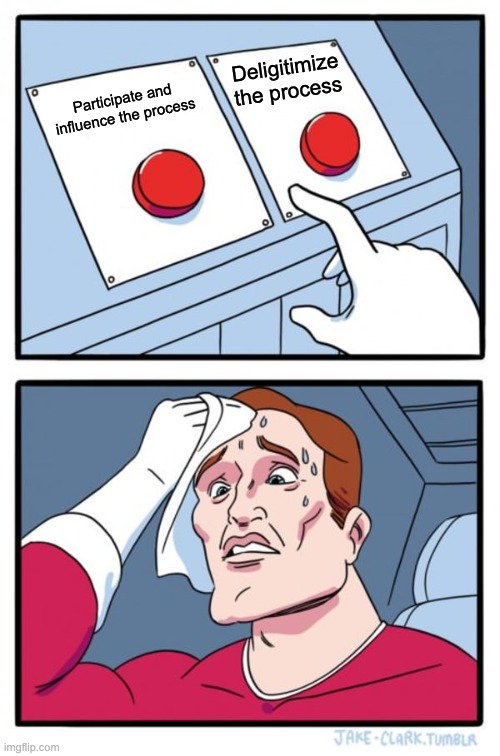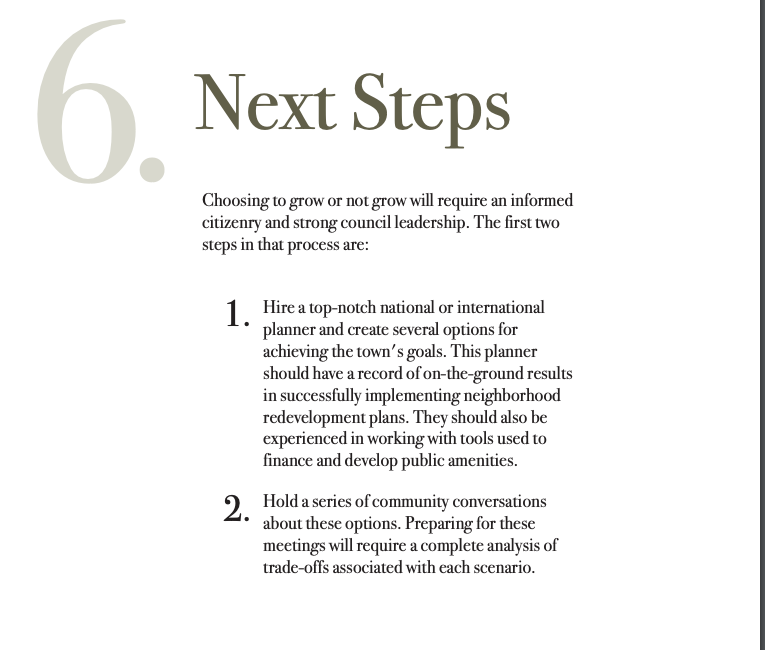In June, a new planning process kicked off in Chapel Hill. It’s called Complete Communities and led by Jennifer Keesmaat, formerly Toronto’s chief planner who has successfully worked with municipalities across the world to increase missing middle housing and transform land use planning to construct denser housing in areas that have schools, transit, and roads.
As we detailed last month, the planning initiative sounds a lot like the way human-centered design projects work: Keesmaat and team plan to initially identify 40 people who represent diverse interests within and outside of Chapel Hill, interview them, map opportunities for the town, and then hold focus groups with the 40 representative people, some of whom have been identified. Based on the outcomes decided in those focus groups, Keesmaat and team will then work on a real-life planning exercise with Town Council.
This all seems reasonable to us. Bringing in representative voices from a variety of backgrounds ensures that different stakeholders can be heard equally and equitably in a planning process. (Ed note: Geoff Green, who writes for this blog, has been invited to a first round of interviews.)
Enter CHALT, Chapel Hill’s anti-development group that “has fought vigorously against nearly every major development proposal” since it formed in 2014.
In the past week, three CHALT members have published op-eds (Virginia Gray, Pam Cooper, David Adams) — in The Local Reporter, a publication started by CHALT affiliates — critiquing the Complete Communities process for, among other reasons, only interviewing 40 people.
We find these critiques noteworthy for several reasons:
40 people is actually plenty
In human-centered design work, the idea is not to interview or survey every single person in a community who wishes to be heard. Survey response bias is a well-known phenomenon, including in local planning information-gathering processes. This means that even scientific surveys can end up lopsidedly favoring voices who want to be heard, instead of ensuring that representative voices that reflect the actual community are selected. In fact, one of the groups that Keesmaat’s team says they want to reflect are “people who oppose more housing development or housing density.”
Among the initial people selected, three (Julie McClintock, Charles (Chuck) Berlin, John Quinterno) are active in CHALT. One (Jamzetta Bedford) was endorsed by CHALT. One (Lisa Kaylie) led a PAC that advocated for two CHALT-backed candidates during the Orange County Commissioners race. (A few more have signed CHALT petitions.) CHALT is super well-represented and their voices will be heard during this process.
usual suspects suspect unusual suspects will yield unexpected results
Raising doubts about a process before it starts is a tactic that has been used before to halt planning projects in Chapel Hill.
About a decade ago, Chapel Hill undertook a community-wide process to envision what the town might look like in 2020. CHALT wasn’t around then, but the folks who would go on to form CHALT were — and they criticized the process extensively. That made enough folks question the process that the exercise failed — which meant absolutely nothing could get done.

CHALT called for the town to engage in community-based planning!
After Rod Stevens’ housing analysis report was published, CHALT championed the town to conduct the very kind of planning the town is doing right now. They have continually pointed to the Rod Stevens report as something the town should follow. This is page 6 of that report:

CHALT now appears to not like this particular consultant or what the outcomes may be, and therefore members are criticizing the process before it begins.
Complete Communities require dense housing – is that the rub?
Given CHALT’s long history of opposing virtually all new multifamily development, it is reasonable to wonder if their emerging opposition to the Complete Community planning process is actually a reflection of their realization that Complete Communities will have more housing – as well as other elements of healthy urban neighborhoods that CHALT typically opposes.
Keesmaat’s June 21 presentation compares a typical suburban community to a Complete Community. The typical suburban community described sounds a lot like the Chapel Hill of today that CHALT fights so hard to preserve – dominated by low-density single-family neighborhoods and disconnected commercial districts that require nearly all residents to be car dependent.
A Complete Community, by contrast, includes “a diversity of housing types,” are designed to favor walking and biking over driving, and have “higher density, higher use [buildings], and lessened need for driving/parking.”
Despite CHALT’s rhetoric, we can infer from their actions that they favor a typical suburban community to a Complete Community. It’s important for CHALT’s voice to be heard in this planning process – and it will be – but it’s important to note that achieving a Complete Community will require changes to the look and feel of Chapel Hill. It will require more housing, including housing for people who cannot afford luxurious single family homes. It will require drivers in cars to occasionally be slowed by pedestrians and cyclists. If we are serious about addressing our housing and climate crises, it is crucial to move beyond community engagement strategies that overwhelmingly advantage opponents of housing, density, and change.
The authors of this post (Stephen Whitlow, Melody Kramer, Kyle Onda) have lived in Chapel Hill for a combined 300 years.